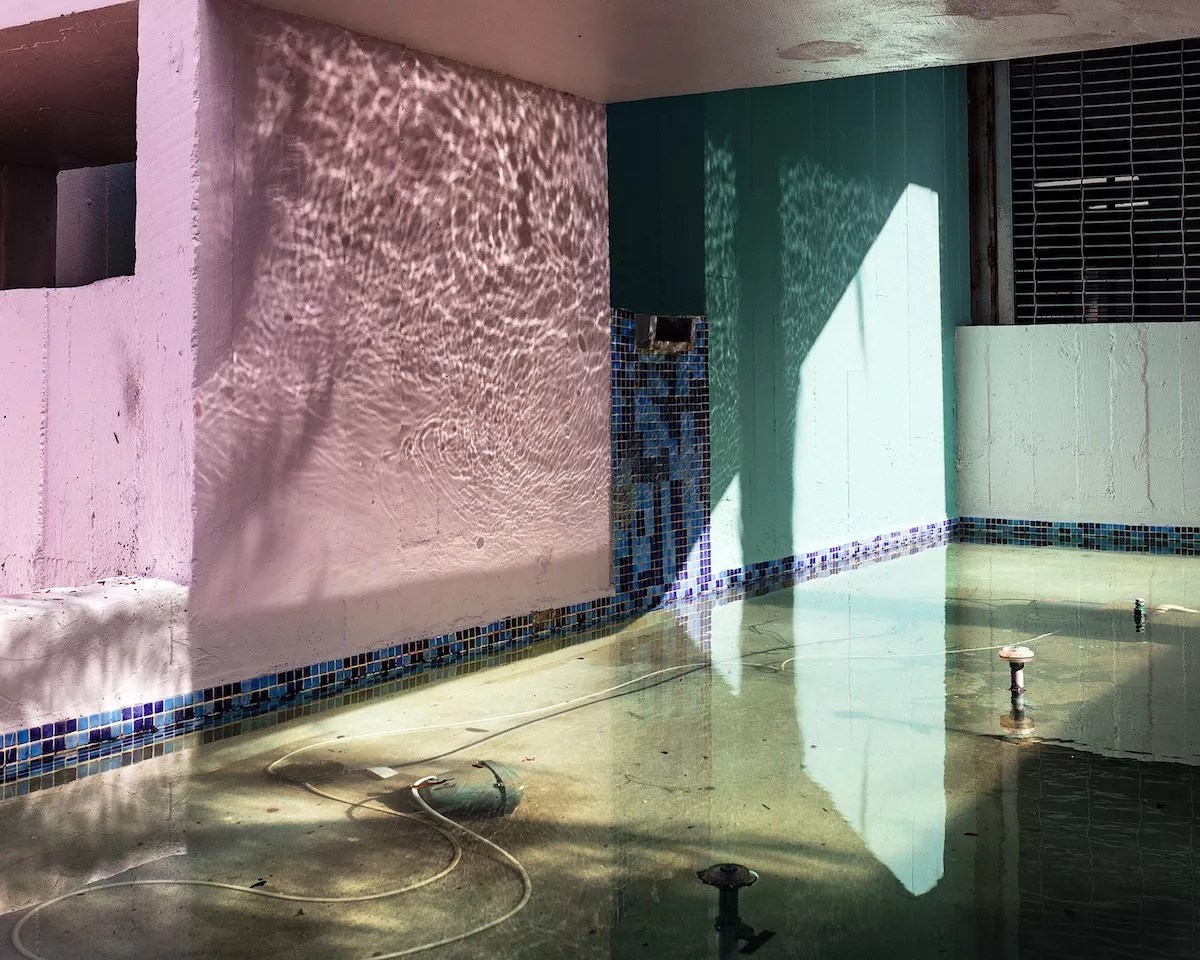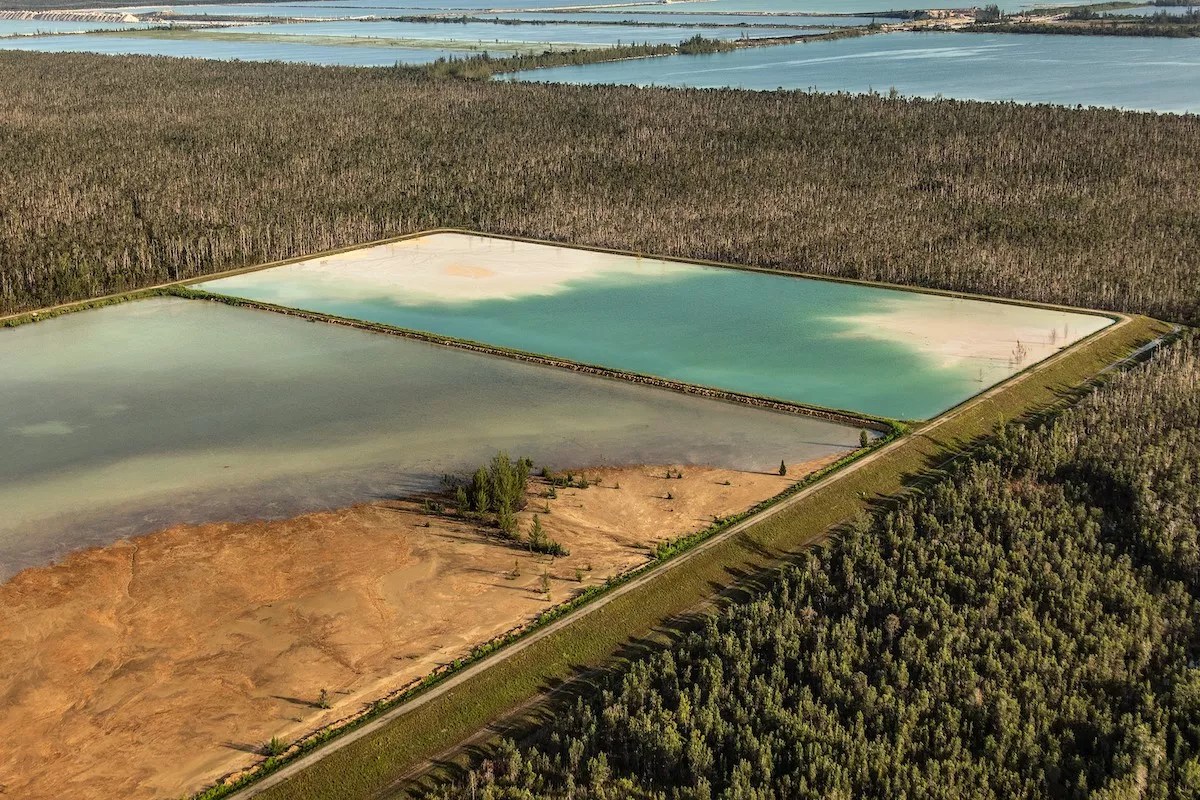
Photo by Anastasia Samoylova

Audio By Carbonatix
Shortly after moving to South Beach, artist and photographer Anastasia Samoylova became acutely aware that she lived in a flood zone. It was the first time she had to prepare for a hurricane, and coincidentally, if not serendipitously, the first major hurricane to threaten the Florida coastline since 2005.
For South Floridians, the anticipation of 2016’s Hurricane Matthew proved more menacing than the storm itself. It pivoted north and strayed far enough from the coast to avoid significant damage.
In the game of hurricane roulette, South Florida was spared.
It wasn’t that bad, Samoylova thought.
The following year, Samoylova wouldn’t be so lucky. Hurricane Irma pummeled the state, drenching Miami in three to five feet of rain, peaking at six feet in some areas. The storm thrashed even the most resilient palm trees and indirectly caused 33 deaths in South Florida.
At the time, Samoylova was living in a 1950s art deco building. By the time she realized South Beach was deserted and that most of her neighbors had evacuated, it was too late. Gas stations had been depleted and highways were jammed with people fleeing to safer ground. As Irma drew closer, fear set in.
The day after Irma hit, Samoylova emerged from her apartment with a sobering cognizance: Humans, despite their consequential impacts on the environment, are ultimately infinitesimal when compared to the force of nature.

Garage After Hurricane, 2017
Photo by Anastasia Samoylova
“You realize that nature as a concept – we did not get it under control whatsoever,” Samoylova says. “We are very much an invasive species.”
Samoylova explores living with climate anxiety in one of America’s most vulnerable cities through her observational photography series, “FloodZone.” Two years after the series’ initial release as a book and a traveling exhibition, Samoylova’s seminal work will return to South Florida on Friday, October 15, at HistoryMiami, where it will receive its most extensive showing to date with 46 photos, including some never seen before.
Samoylova was born in 1984 amid the Soviet Union’s Era of Stagnation in the country’s southern agricultural region. She was used to expansive pastoral settings, but at a young age, she moved with her mother to the densely packed capital, Moscow, finding herself surrounded by concrete blocks. Any sliver of greenery was confined to tight, manmade spaces. This is how she became aware of the division between the natural world and the artifice of development – and the inorganic attempts to intertwine the two. It’s a theme Samoylova revisits through her photographic lens in “FloodZone,” capturing Miami’s haphazardly developing urban core.
After receiving a master’s degree in environmental design in Moscow in 2007 and a master of fine arts in 2011 from Bradley University in Illinois, where she focused on the industrial agriculture of the region, she arrived in Miami in 2016. She was offered a studio at Fountainhead’s Little River building and began noticing the paradoxes around her, like water coming out of a drain in the middle of a sunny day. To her, Miami was like a life-size collage, riddled with unfinished developments, like ones in Overtown fenced off by luxuriously printed billboards, a thread she presents in “FloodZone,” that seems like surrealist art. When looking at the scenes, the viewer can’t help but wonder what part of the image is real – for Samoylova, every photo is a construct.

Construction in Normandy Shores, 2018
Photo by Anastasia Samoylova
“The idea [with ‘FloodZone’] was to continuously remind people of what’s at stake, because a lot of people love Miami, including myself. It’s this very tumultuous, complex, set of feelings,” Samoylova says. “I don’t know anyone who’s not dealing with climate anxiety living here.”
The day after Irma, Samoylova brought her digital camera with her to survey the damage. She posted the photos to her social media and immediately received interest from the community. That’s when she knew she had to do the project.
In one photo taken the day after the hurricane, Samoylova’s son stands ankle-deep in her building’s flooded garage. The boy, who is wearing a helmet, stands in the foreground, shoulders arched, looking out onto an expanse of rippling water and erect concrete. The black-and-white image, titled Garage After Hurricane, is ominous – one of the few pieces in the show that’s devoid of color.
The photos may be specific to life as a Miamian, but their implications resonate far beyond the flood zone.
“The project is meant to serve as the catalyst for bigger conversations,” Samoylova says.
Samoylova’s ability to portray an impressionistic palette of chartreuse, salmon, and azure in Miami’s artificial and seminatural elements provides a glimpse into locals’ mundane yet vibrantly painted reality. Through her observational lens and careful framing, her images serve as metaphors for Miami’s existential conflict between artifice and reality. How are we meant to exist in a city that’s forecast to drown?

Square Lake, 2018
Photo by Anastasia Samoylova
The first time Samoylova visited the area was on vacation as a student. She was impressed by Miami Beach’s pastel-tinted art deco district. It was only later that she learned even that was a construct. Originally painted white, the buildings received their pastel makeover during Miami Beach’s redevelopment in the 1980s.
“This is a marketing trick, and that’s why color is an important part of this project,” she says. “There is a sort of dichotomy between real and natural, the cultivated, natural-looking things, and then finding out about some of those actually being invasive species.”
Samoylova, who began observing her immediate surroundings in South Beach, eventually expanded to Little Haiti, a community in the midst of gentrification. There, she photographed a man tending to his lush garden. He wears a key centered on his bare chest, surrounded by a verdant garden that took him years to cultivate but might inevitably have to be left behind by rising rents and tides.
“That is the treasure worth preserving,” Samoylova says.
The victims of climate change in South Florida now include the hundreds who died in the tragic collapse of the Champlain Towers South in Surfside this summer. Initial analysis showed the collapse may have been caused in part by the building’s proximity to the coast and damage caused by rising sea levels.
Samoylova, who is based in North Beach, lives just down the street from the site.
“I just now got over the PTSD,” she says.

Concrete Erosion, 2019
Photo by Anastasia Samoylova
As she looks out her window, she sees the abandoned Deauville Beach Resort building that was damaged after Irma in 2017 and condemned. It’s been rendered another eyesore, with a net attached to catch debris falling from the crumbling edifice.
“If we know this is the level of risks we’re dealing with here, with climate change,” she says, “How would we deal with all that? You want to stay, but you also need to be realistic, and I think the answer here is if we can positively affect policy change within the next five to ten years, then it’s feasible. And if not, I don’t know. You want to put roots down here, but how?”
In one of the more abstract images presented in “FloodZone,” electric-green weeds burst between carefully placed cement blocks. Nature, of course, always finds a way. Beneath the natural takeover is a cascade of dirt brown, lavender, and Samoylova’s signature blush pink. The image is at first striking in its organic beauty, the way nature can persevere, but Samoylova later learned the colors were a result of concrete erosion from high-octane gasoline used in luxury vehicles. The concrete pillars form the road that leads to the affluent South of Fifth neighborhood in Miami Beach.
“It’s the emissions from all these luxury cars that are sitting there in traffic forever,” she says. “There’s a sense of irony throughout the project as a sort of coping mechanism.”
Still, despite what she’s captured, Samoylova remains hopeful.
“We need to shift our priorities and values from perpetual accumulation of wealth to just being able to enjoy this nature,” the artist says. “We need to understand very clearly that the resources are finite and this needs to be shifted now.”
“FloodZone.” 10 a.m. to 5 p.m. Friday, October 15, through April 17, 2022, at HistoryMiami, 101 W. Flagler St., Miami; historymiami.org. Tickets cost $10 to $12.